Betel leaf, or Piper betle, has long been a cultural staple in Vietnam, often used in wedding ceremonies or chewed by the elderly for its health benefits. This evergreen, vine-like plant, growing over 1 meter tall, is native to Southeast Asia and is widely cultivated in India, Sri Lanka, Indonesia, Vietnam, and Malaysia.
The distinct features of the betel leaf include its oval shape, dark green color, and pointed tip, with the leaf growing up to 10-13 cm in length and 4-9 cm in width. The petiole is heart-shaped, ranging from 1 to 4 cm in length, and the leaves grow alternately.
There are two common varieties of betel leaf in Vietnam: the quế and mỡ species. The quế variety is used in the traditional practice of betel chewing, while the mỡ variety has larger leaves and is less favored.
1 Characteristics of Betel Leaf

Betel leaves are a rich source of essential oils, with concentrations reaching up to 2.4%. These oils contain betel-phenol and chavicol, two phenol compounds, along with other phenolic compounds that offer numerous benefits, especially for infants.

In traditional Eastern medicine, betel leaves are valued for their antibacterial properties, serving as a natural antibiotic to treat infections and soothe diaper rash. Western medicine also recognizes the leaf’s ability to temporarily soothe crying infants.
Benefits of Betel Leaf for Infants
– Pain Relief: For minor scrapes, scratches, or skin inflammations, betel leaves can be crushed and applied to the affected area for immediate pain relief.

– Relief from Hiccups: To soothe a hiccuping infant, gently warm a betel leaf and place it on the baby’s fontanel for about 10 minutes before breastfeeding. This will help calm the hiccups and promote better sleep.
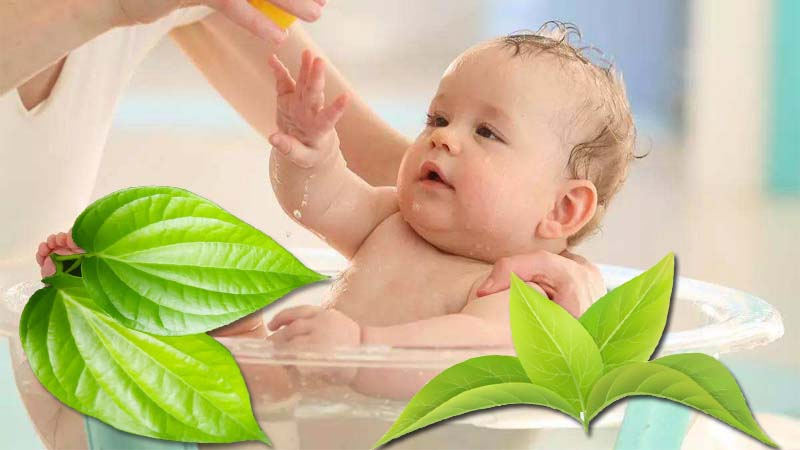
– Respiratory Health: Warming a betel leaf and holding it 2-3 cm away from the baby’s nose daily can help clear their airways and fight infections.
However, Dr. Truong Huu Khanh, Head of the Neuroinfection Department at Children’s Hospital I, advises that parents exercise caution when using this traditional method.
2 Steaming Betel Leaf for Infants
To steam betel leaves for your infant, follow these steps:
– Prepare the Betel Leaves: Source betel leaves from a trusted supplier, ensuring they are free from pesticides. Rinse the leaves in diluted saltwater to ensure they are clean.
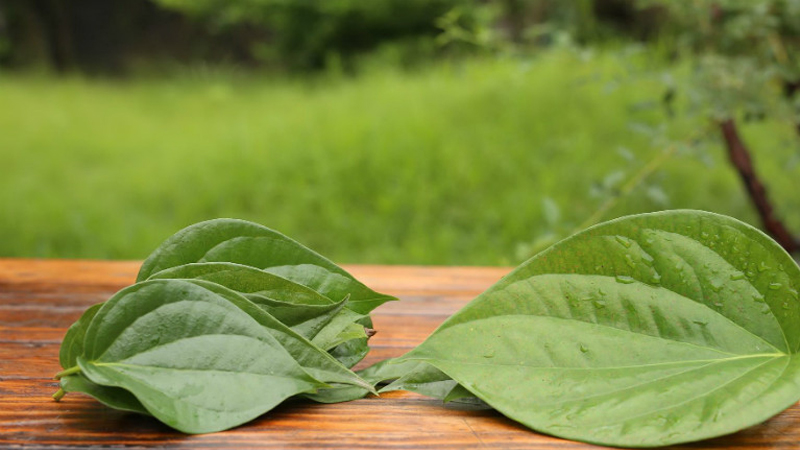
– Warm the Leaves: Gently crush the leaves to release their essence, and then warm them for 1-2 minutes on a stove.
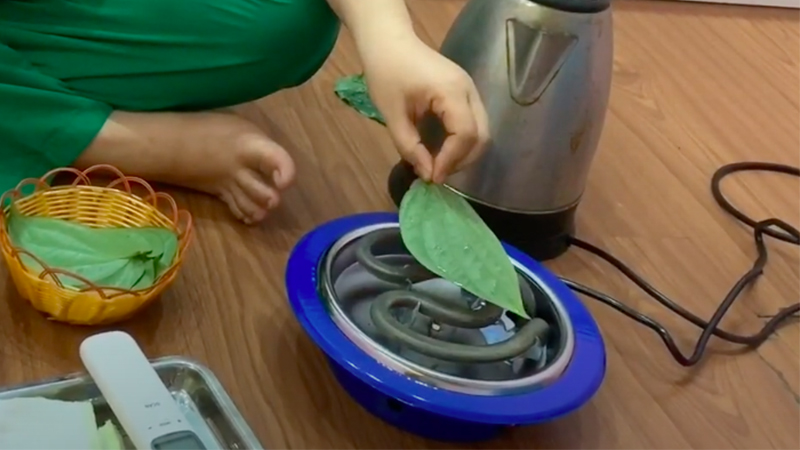
– Temperature Check: Before applying the warmed leaves to your baby, test the temperature by placing them on the inside of your wrist to ensure they are not too hot.
– Steaming Process: You can steam various parts of your baby’s body with the warmed leaves:
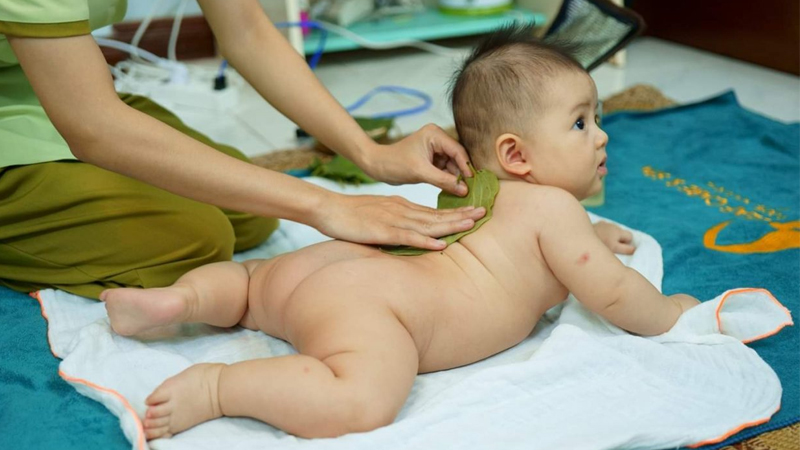
– Abdomen: Steam 10 times to keep the baby’s tummy warm.
– Chest and Back: Steam 15 times to warm the lungs.
– Head: Steam 10 times to warm the fontanel.
– Groin Area: Steam 5-7 times.
3 Precautions when Steaming with Betel Leaves
– Use an electric stove to warm the leaves, or if using a charcoal stove, ensure proper ventilation to avoid smoke inhalation for both you and your baby.
– Consistency is key: For best results, perform the steaming ritual consistently for 1-2 months to help strengthen your baby’s overall health and reduce their sensitivity to pain.
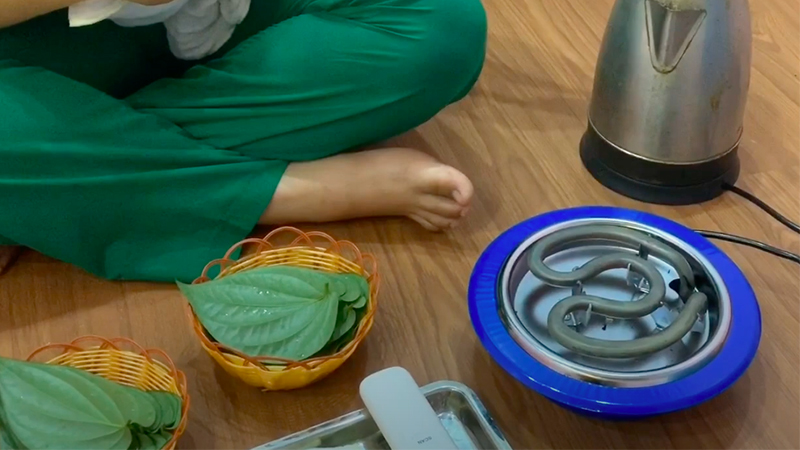
– Avoid direct application of warmed leaves to open wounds or scratches on your baby’s skin.
– Do not combine betel leaf steaming with the application of hot oil.
– As an infant’s skin is sensitive, always ensure the leaves are not too hot to prevent burns.
These are some of the benefits of steaming your infant with betel leaves. Give it a try and experience the positive impact it can have on your little one’s health and well-being.
Understanding the Uses and Benefits of Essential Oils
What are the therapeutic properties of essential oils? How can they be used to improve your wellbeing? This article will explore the various types of essential oils, their benefits and uses. Uncover the power of these natural remedies and find out how they can help your own health and wellness!






































